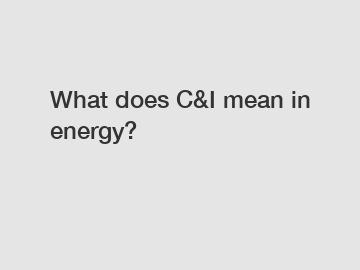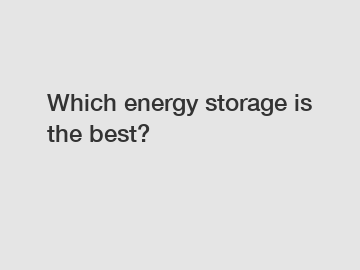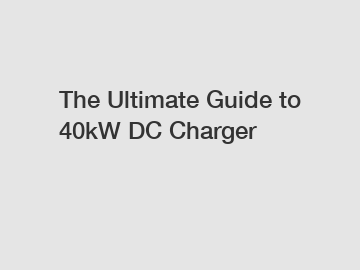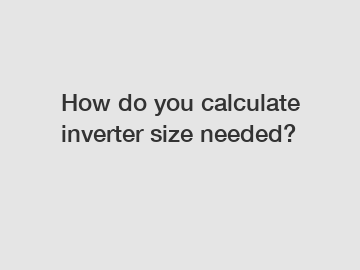How to Calculate What Size Generator You Need
How to Calculate What Size Generator You Need
A commercial generator plays a critical role in your business continuity plan. By providing backup or emergency power to your building during a power outage, commercial standby generators enable critical facilities like elevators and security systems to continue operating. Standby generators also minimize business and data losses that arise from computer system failures.
Dingbo contains other products and information you need, so please check it out.
However, determining how to properly size a generator depends on a number of factors. Before you proceed with your commercial generator purchase, you'll need to consider the needs of your business and the technical constraints of your building first.
Contents:
Why Proper Generator Sizing Matters
Commercial backup generators provide power to a number of critical safety systems that operate during an emergency, including fire alarms, fire pumps, security systems, and emergency lighting. Different buildings require different levels of backup power to keep these life-saving systems operational in the event of a blackout.
This is why most large-scale commercial generator installations require an engineering plan and an engineer's supervision to ensure compliance with National Electrical Code (NEC) and National Fire Protection Association (NFPA) requirements in the United States. Beyond regulatory compliance, not knowing how to properly size a generator can also lead to a host of other problems.
Generators that are too large may cause:
- Damage to electrical systems
- Unnecessary operational expenses
- Inefficient power production
Generators that are too small may cause:
- Generator damage or overheating
- Insufficient or unreliable power
- Critical facilities and security system failures
Let's look at what you need to know about estimating the right sized generator for your business.
Calculating Your Power Requirements
Start with making a list of everything that you plan to power with your backup generator. This varies widely depending on what type of business you operate, so don't make the mistake of glossing over this step too quickly.
- For a retail establishment, you may want to power some or all of your payment terminals, lights, security systems and mission-critical data servers.
- For an office building, you may need to power lighting, telecommunications, security and other basic systems that will allow people to evacuate the building safely.
- For a restaurant or food establishment, you should consider refrigeration, HVAC systems or any other appliances that require power to prevent food from spoiling.
- For a healthcare facility or clinic, pay close attention to life-saving systems that require consistent power to operate, including breathing and dialysis machines.
Some factors for sizing a commercial generator include selecting single- or three-phase power, voltage selection and total power output. Be aware that most commercial applications require a reserve or surge capability, especially for large motors operated by several units independently.
Measurement Methods
Once you know which items you need to power with your generator, you will need to estimate your business's power consumption at peak usage. Depending on the type of business and your power needs, there are a variety of methods you can use to determine your full load capacity.
Real-Time Measurement
- Use a clamp-on ammeter on each leg of the electrical service and add the measurements together to provide the total amps used by the facility.
- Divide the total amps by three for three-phase current, and by two for single-phase current. Multiply the result by the supply voltage, and again by 1,000 for kilowatts required.
- Add the power in kilowatts used by each emergency safety system according to articles 700, 701, 702 and 708 of the NEC to the kilowatts required to obtain full load kilowatts (kW).
Full load kW = Total amps x supply voltage / 1,000
Reserve capacity = Full load kW x 0.25
For 100 percent power, generator size = Full load kW + reserve capacity
For more information, please visit 700 kw generator.
Explore more:How much does a hydrostatic test cost?
How do you hook up a 3 phase inverter?
Maximizing Energy Savings with Integrated PV Systems
How to choose the best biotechnology supplier?
Revolutionizing Solar Power: The Commercial AC-Coupled Inverter
Is it worth investing in durable inverters for your business?
Revolutionizing Energy Production: The Future of Integrated PV Systems?
Utilize your utility company's billing system to find your maximum power usage.
Full Load Capacity by History
- Review your utility bill for the peak demand each month.
- Find the highest peak demand over the previous year and then add 25 percent for reserve capacity.
Full Load Capacity with Extensive Motor Use
- Multiply the starting current for the largest motor that turns on and off by the voltage for the number of watts required.
- For all other motor and non-motor loads, multiply the current by the voltage for watts.
- Calculate total watts used by the largest motor and all remaining motor and non-motor loads and multiply by for kilowatts.
- Add 25 percent for reserve/surge capacity and size the generator accordingly.
Square Footage Measurement
The square footage sizing method is commonly used for retail locations such as grocery stores, restaurants and convenience stores.
Retail application: 50 kW + 10 watts per square foot
Other commercial application: 50 kW + 5 watts per square foot
In addition to estimating your total power needs, it is critical to determine the starting load and running load for each item.
Determining Your Starting and Running Wattage
- Starting load: The initial high load to start items from a dead stop. For compressors and motors, the starting load can be up to six times the running load.
- Running load: The load needed to keep items operating after initial start.
For backup use, you can calculate the load on a staggered start for multiple units to spread out the load. Use the highest Locked Rotor (LR) rating from of all the items you want to run.
Steps for Estimating Starting and Running Wattage
- Select the items you wish to power at the same time, and add together for the total running watts.
- Selected the item with the highest number of starting watts.
- Add the two numbers together for total watts needed.
If you can't determine the running watts of an item, use the formula of watts = volts x amperes. Only motor-driven items have an additional starting voltage requirement. Remember: For accurate sizing, convert all amps to kilowatts.
Examining Generator Performance Charts for Load Requirements
Once you have calculated the amount of power you will need from a commercial backup generator, the next step is to identify a generator unit that will meet your needs. To help guide your selection, manufacturers offer performance charts for each product they sell.
First, look for a unit with the necessary power rating to run each of your selected items. Generators are usually rated in kilowatts and come in a wide variety of capacities. If your needs fall between common ratings, choose the next highest capacity.
Other Generator Factors to Consider
- Operation: Generators can operate automatically or manually. Nearly all commercial generators utilize an automatic switch that automatically switches a building's power to your backup generator when your primary power fails.
- Power phase: Make sure to determine if you need single-phase vs. three-phase power. Most commercial backup systems will require three-phase service to provide the voltage levels required.
- Fuel source: Typically you can choose from diesel, propane, natural gas or gasoline. Diesel and gasoline are both more efficient than propane, but propane is ideal for sporadic use of a generator since it does not degrade in storage.
- Noise rating: Depending on the installation site, consider the noise rating of the unit when it's running.
Need Help Determining How to Size a Generator?
To avoid the pitfalls that come with not knowing how to size a generator, consider seeking out the assistance of a backup power expert. General Power is here to help you find the right generator for your specific needs.
Our power experts will partner with you to understand your needs and help you select the right unit for your business. Call 1-888-819- to speak to one of our friendly staff members.
The company is the world’s best 225kva generator supplier. We are your one-stop shop for all needs. Our staff are highly-specialized and will help you find the product you need.
What are the top 5 tips for choosing a reliable grid-connected inverter?
Revolutionize Your Industry with Senergy's Cutting-Edge Solutions
Revolutionizing Solar Energy: All You Need to Know About Photovoltaic Tiles
What is the most popular design of piston pump?
What are the top 10 best DIY LiFePO4 battery box ideas for businesses looking to purchase?
What is AC coupling in inverters?
5 Benefits of Installing PV Shingles Today










